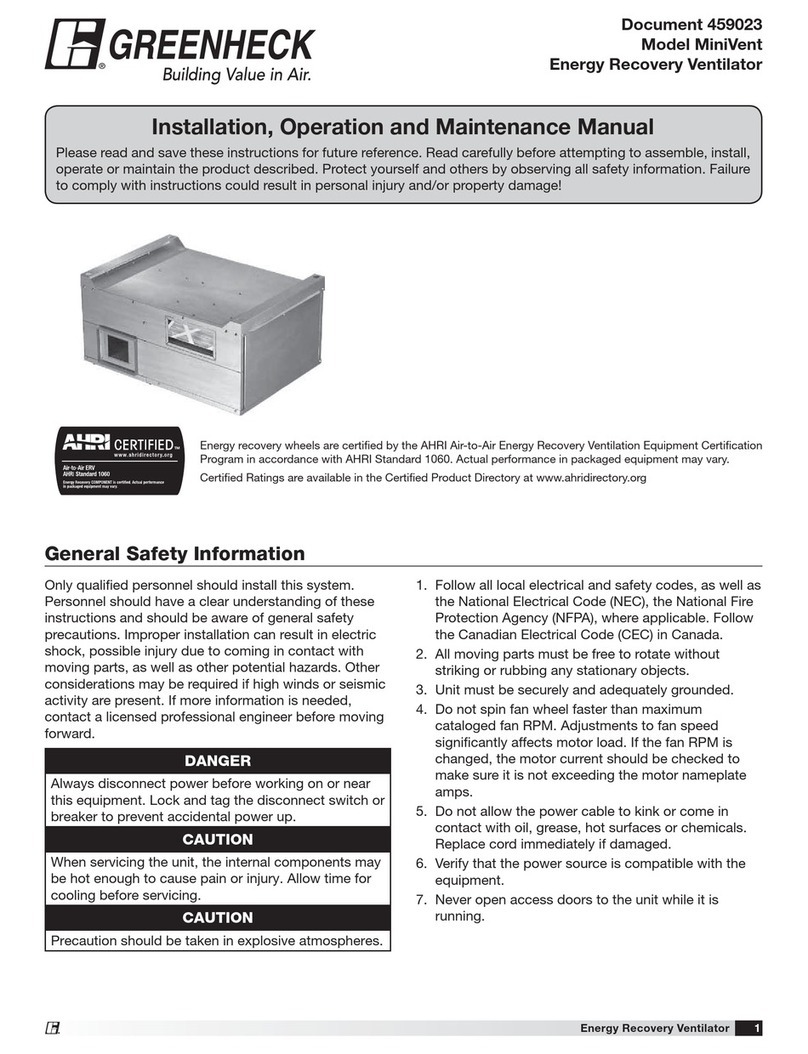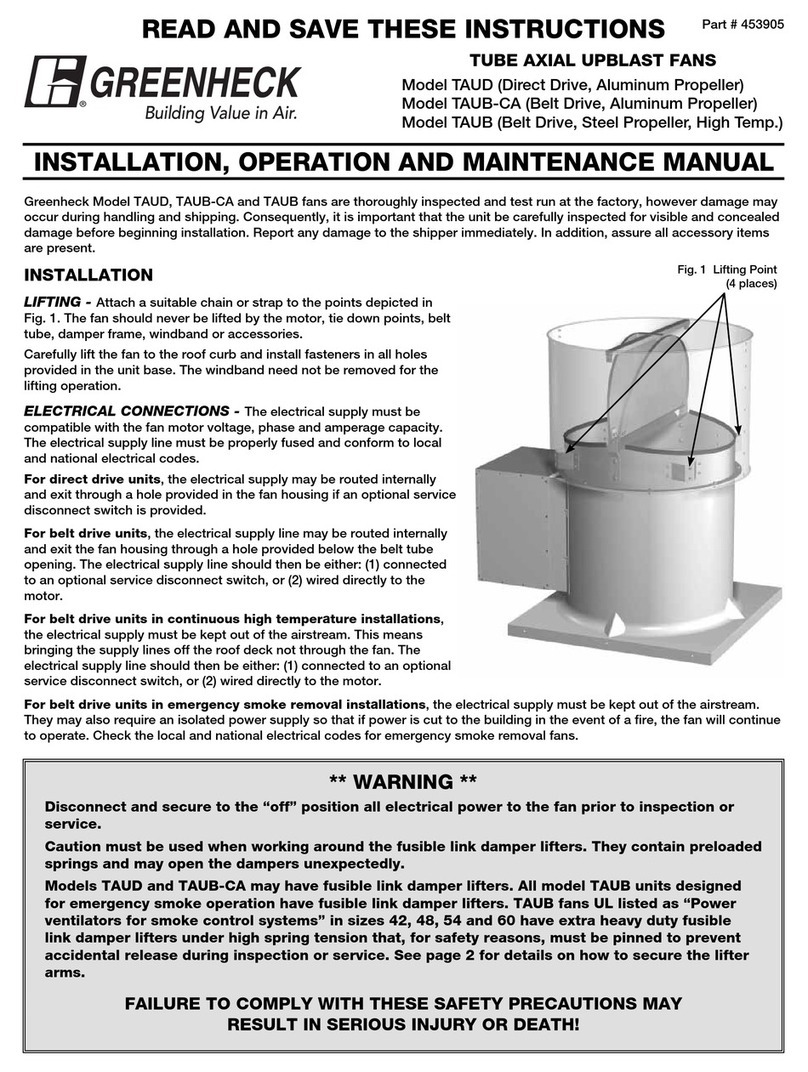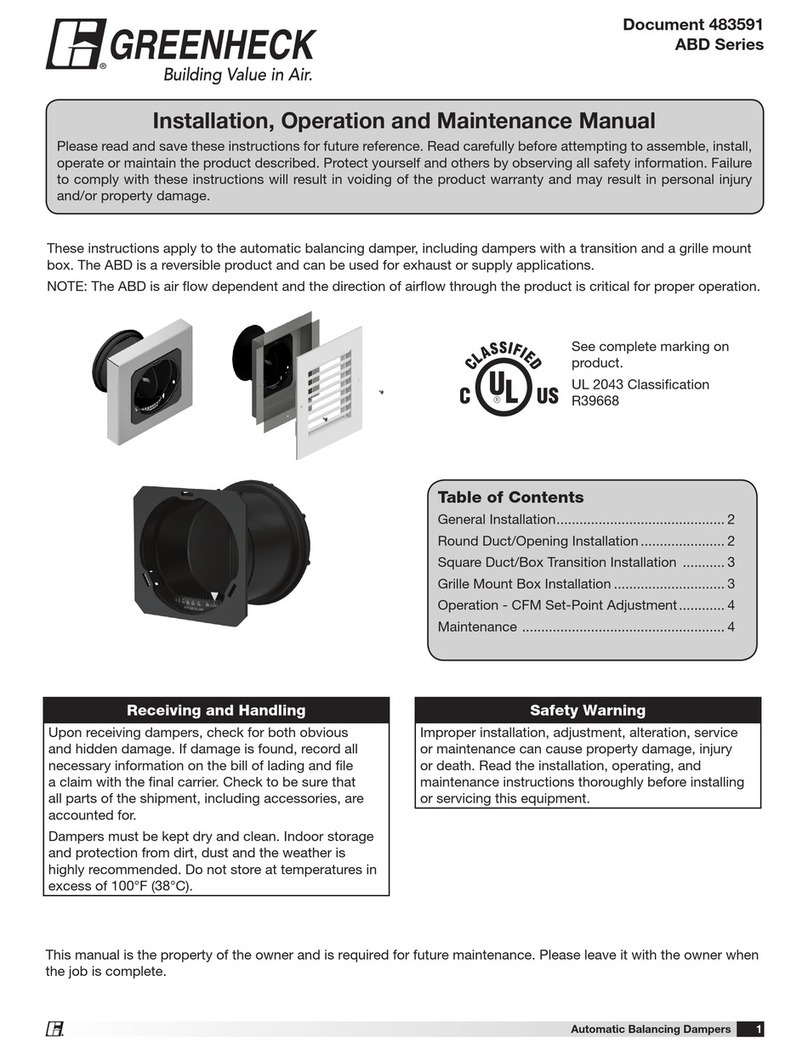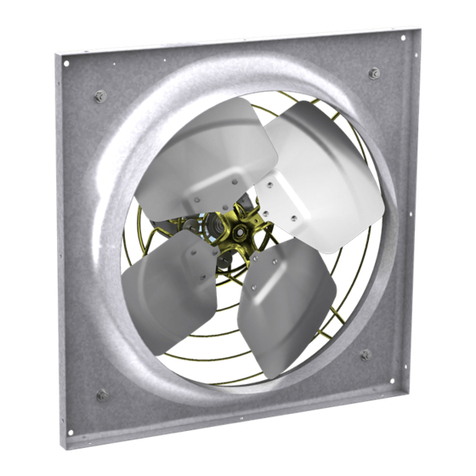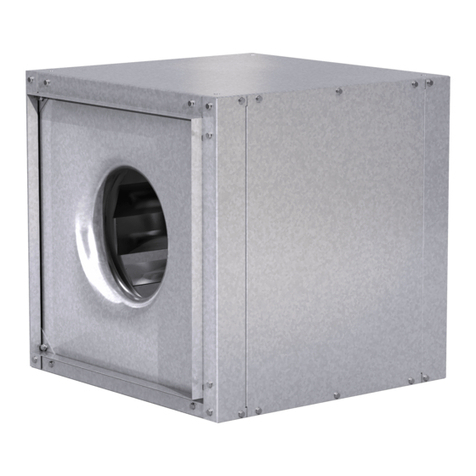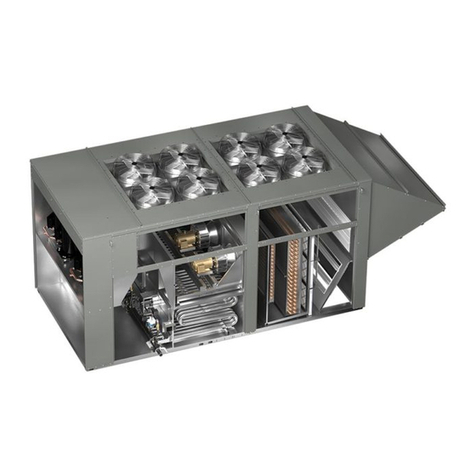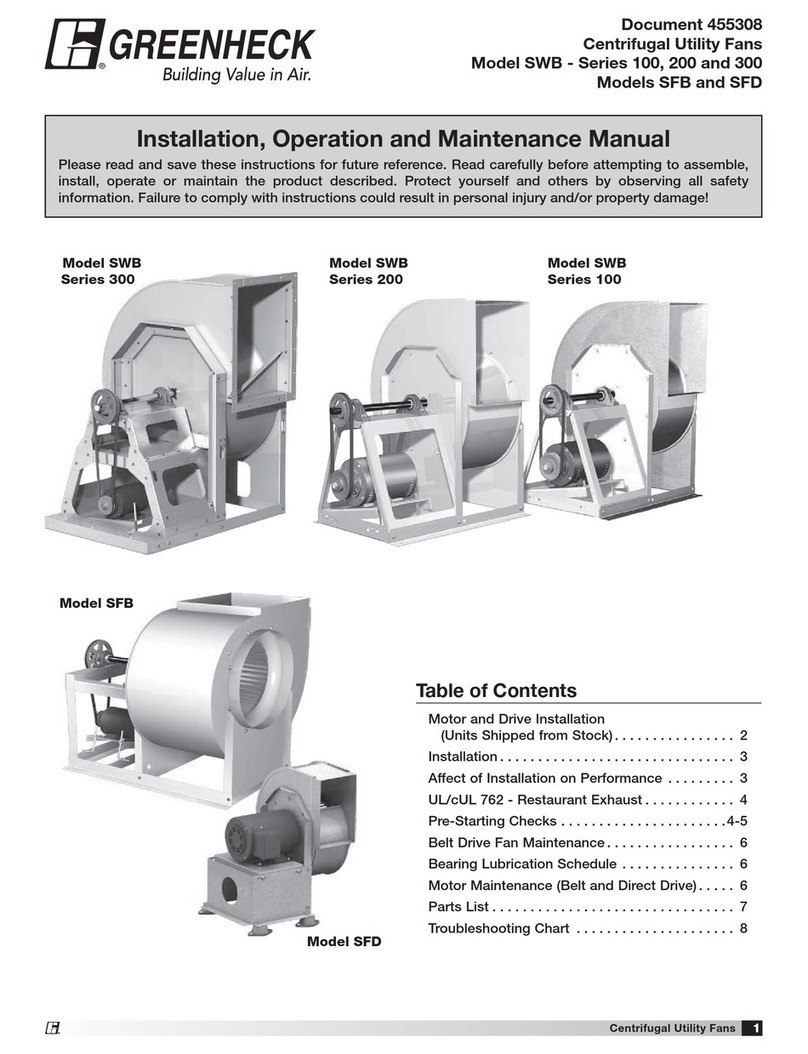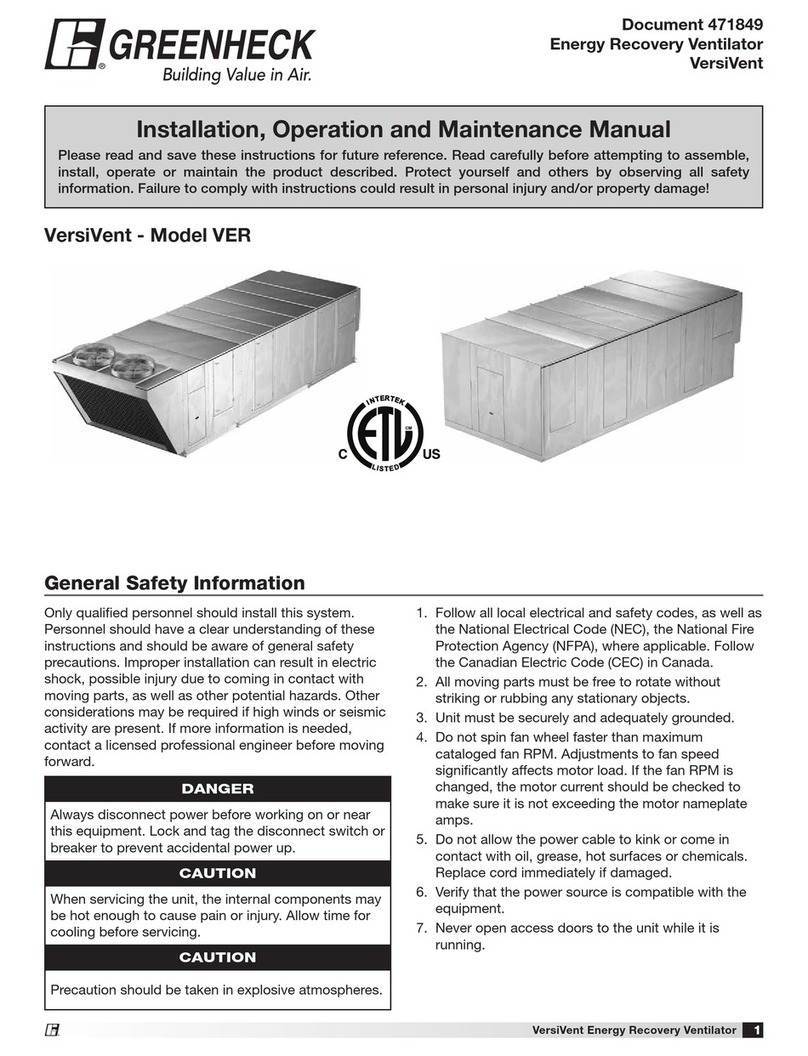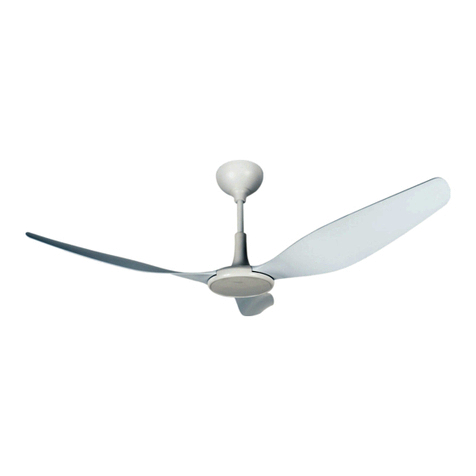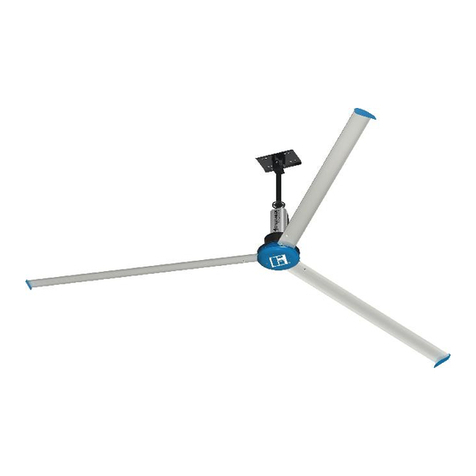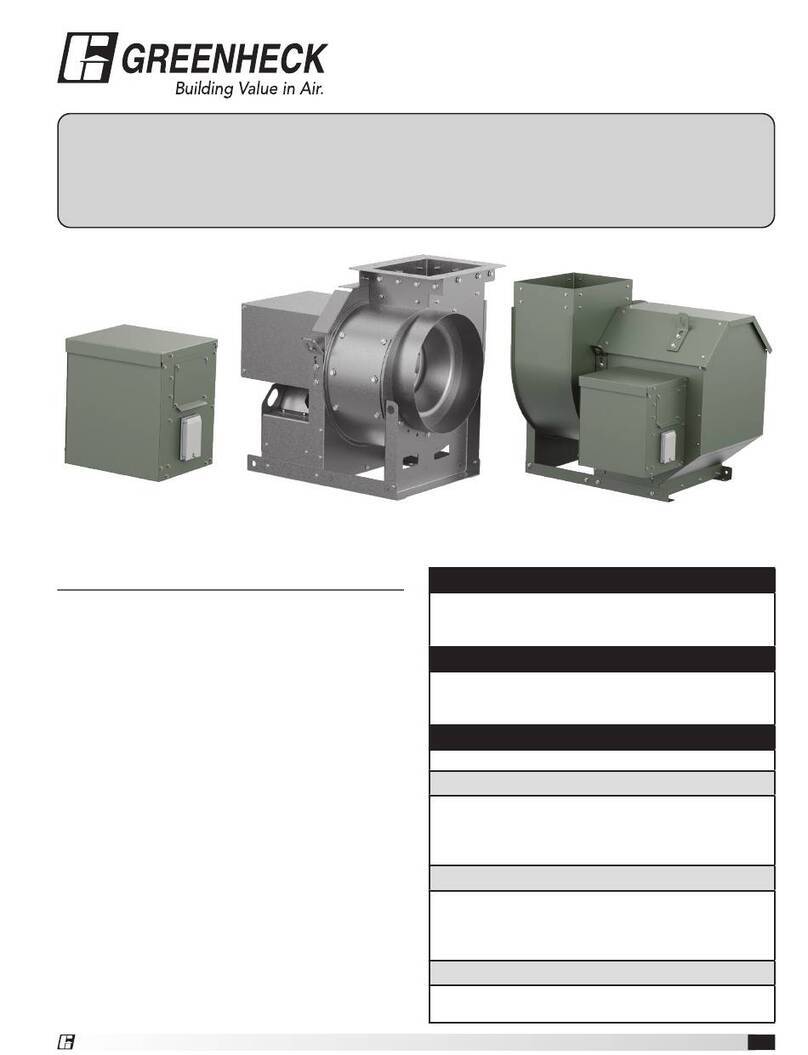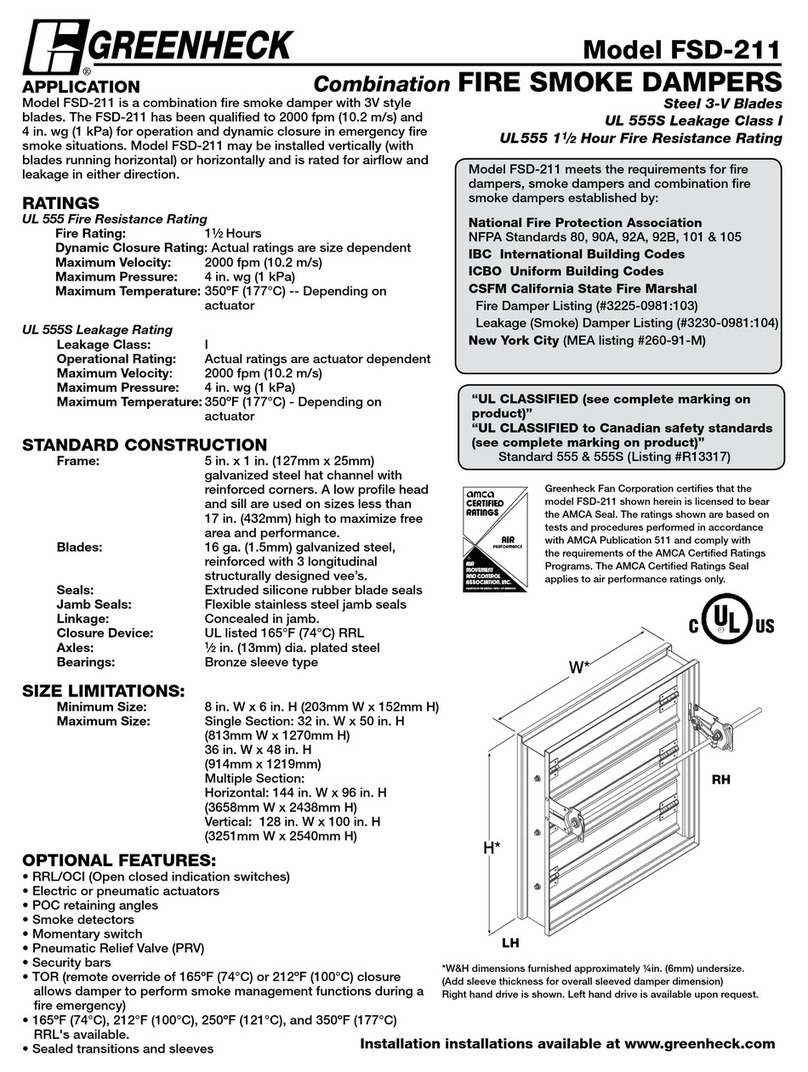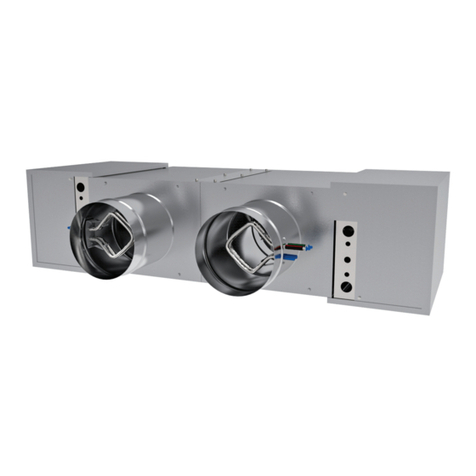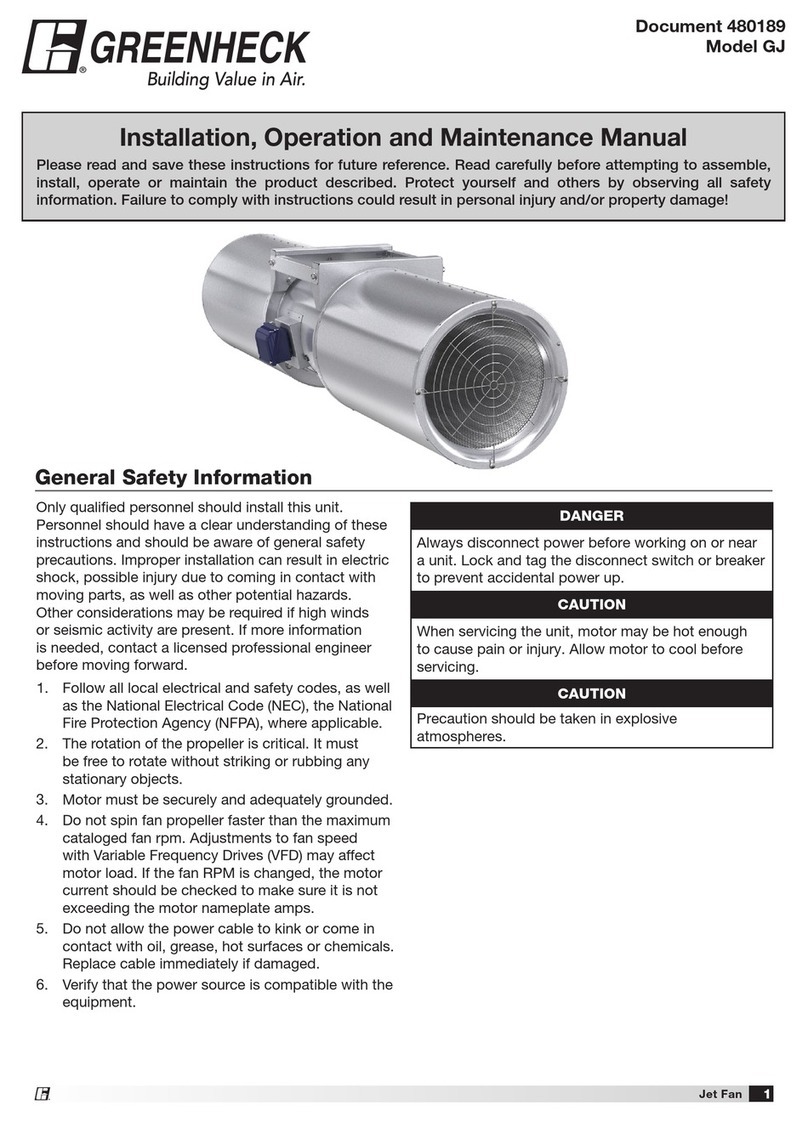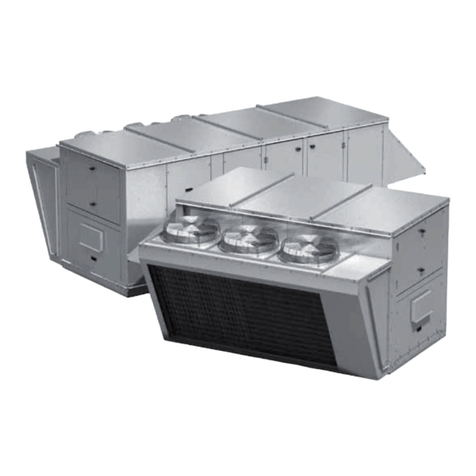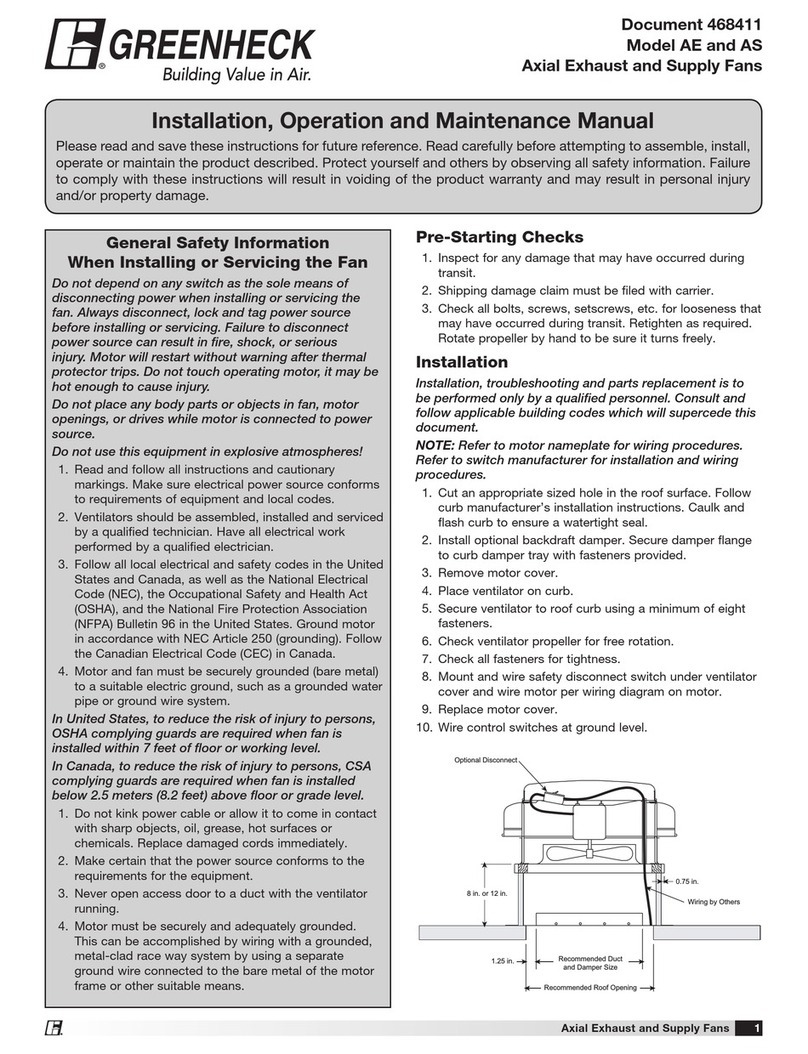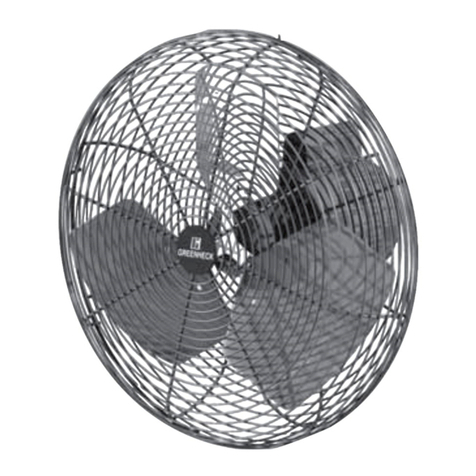
Fan Powered Air Terminal Units 5
NOTICE: Trapeze hangers are not recommended as
they can block the bottom access panels for the motor
and blower.
Fan Powered Air Terminal Units are not designed nor
suitable for outdoor use.
In advance of start-up, verify all electrical connections
are tight and the correct voltage is supplied to the Fan
Powered Air Terminal Unit per the rated voltage listed on
the unit label. If factory-supplied controls are present,
review all wiring diagrams to assure a complete working
knowledge.
IMPORTANT
If equipped with pneumatic controls, the orientation
of the Fan Powered Air Terminal unit is critical. The
pneumatic controls must be mounted right side up.
The Fan Powered Air Terminal must be level within +
or – 10 degrees of horizontal, both parallel to the airflow
and at right angle of airflow. The control side of the Fan
Powered Air Terminal is labeled with an arrow indicating
up. Unless otherwise noted, most electric, analog
electronic and digital controls are not position sensitive
and may be installed in any orientation.
AIR FILTER
NOTICE: Fan powered air terminal units come standard
with a filter rack and filter on the induction inlet. The
filter should be changed on a regular basis to maintain
adequate induction airflow.
MINIMUM CLEARANCE FOR ACCESS
Fan Powered Air Terminals require sufficient space to
allow servicing of the controls, motor/blower and electric
reheat (if applicable) and single point power hookup. A
minimum of 3” of vertical clearance is required below the
bottom of the unit. Horizontal clearance requirements
are dependent upon access panel dimensions which are
indicated on the appropriate submittal. For control panel
access, a minimum of 18” is recommended. See the
appropriate submittal for control panel location.
CAUTION
These clearance recommendations are not meant to
preclude NEC requirements or local building codes
that may be applicable, which are the responsibility of
the installing contractor.
CONNECTING DUCT WORK
NOTICE: Do not insert duct work inside the inlet collar
of the Fan Powered Air Terminal. Inlet duct should be
installed in accordance with SMACNA guidelines.
1. Slip each inlet duct over the inlet collar of the Fan
Powered Air Terminal.
2. Fasten and seal the connection by method prescribed
by job specification.
3. The diameter of the inlet duct in inches must be equal
to the listed size of the Fan Powered Air Terminal;
e.g., a duct that actually measures 8 inches must
be fitted to a size 8-inch Fan Powered Air Terminal.
The inlet tube of the Fan Powered Air Terminal is
manufactured 1/8” smaller than the listed size in
order to fit inside the duct.
4. If an inlet air flow sensor is installed, it is
recommended the installer provide a minimum of 3
duct diameters of straight duct at the Fan Powered
Air Terminal inlet.
5. The outlet end of the Fan Powered Air Terminal is
designed for use with slip and drive duct connections
(flanged outlets optional).
6. A rectangular duct the size of the Air Terminal outlet
should be attached. (Refer to submittal for correct
size.)
FIELD ELECTRICAL WIRING
DANGER
High voltage electrical supply is needed for this
equipment. The control cabinet contains live electrical
parts. Contacting these parts with power applied may
cause serious injury or even death. This work should
only be performed by a qualified electrician.
All field wiring must comply with local building codes
and NEC. (ANSI/NFPA 70).
When applicable, electrical control and piping diagrams
are attached to the inside of the control enclosure cover
of the Fan Powered Air Terminal.
Use copper only conductors with insulation rated 75ºC.
The Fan Powered Air Terminal must be properly
grounded per NEC 424-14 and 250.
Always check product label for voltage and current
data to determine the proper wire size and overcurrent
protection.
The control panel cover must be closed or in place
before applying electric power to the Fan Powered Air
Terminal.
These recommendations are not meant to preclude
NEC requirements or other applicable local building
codes and are the sole responsibility of the installing
contractor.
